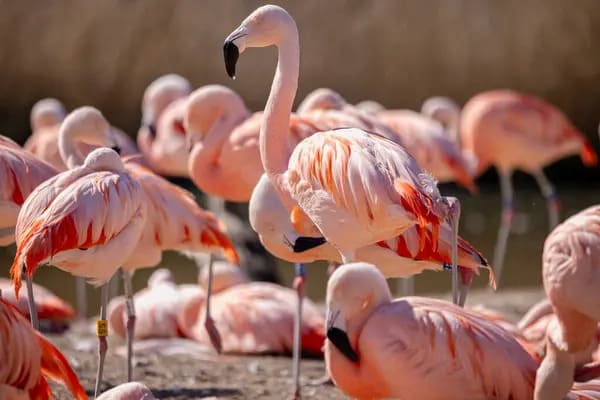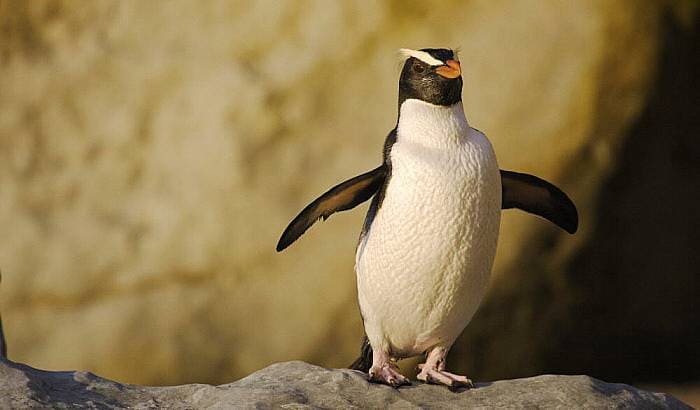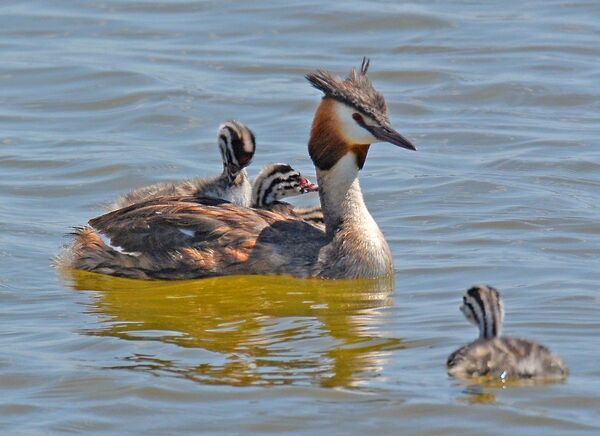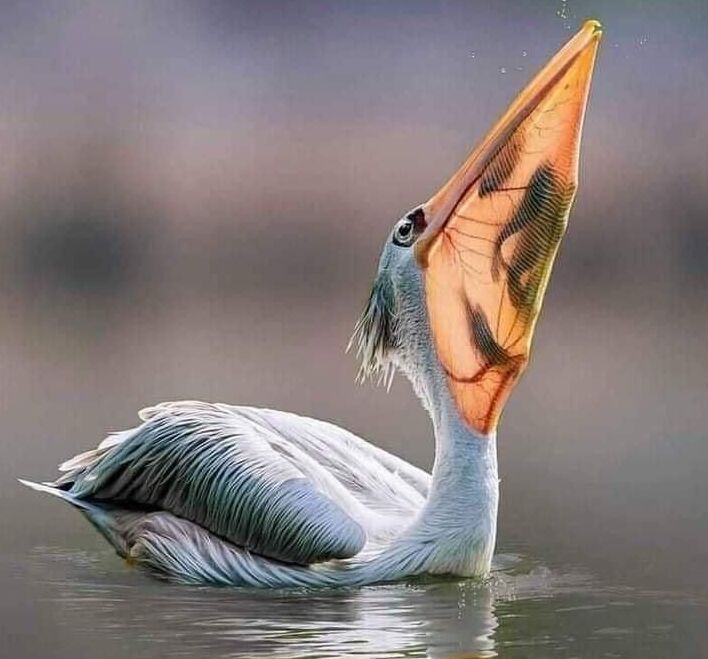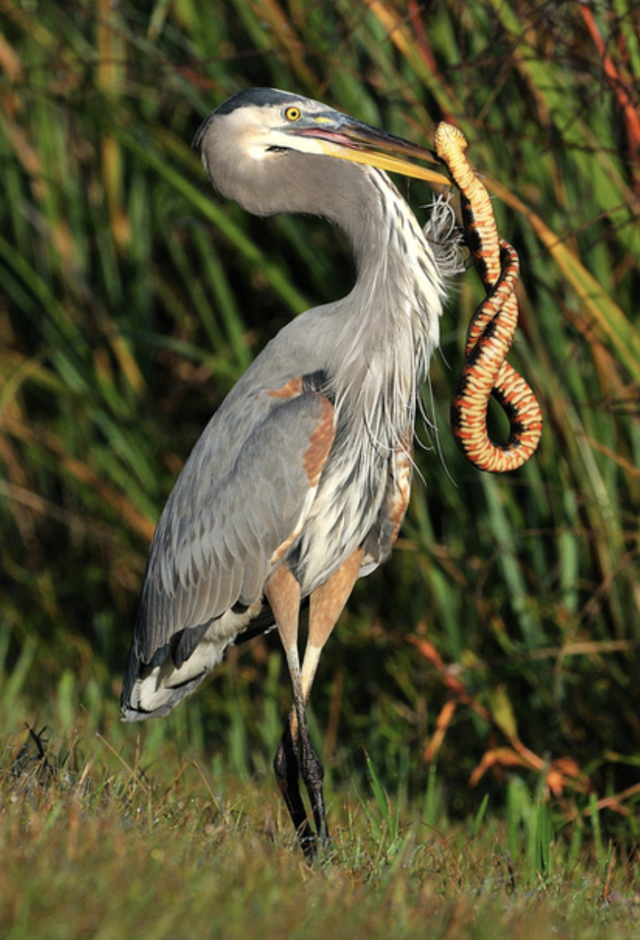Anhinga melanogaster
IUCN
LCBasic Information
Scientific classification
- name:Anhinga melanogaster
- Scientific Name:Darter,Snake Bird
- Outline:Wading birds
- Family:A.melanogaster Anhinga Anhingidae Suliformes Aves Animalia Chordata
Vital signs
- length:850~900mm
- Weight:About 2.6 kg
- lifetime:9-16 years
Feature
It is monogamous, and its belly feathers are dark brown, hence its name. It looks like a snake but is not a snake, especially its long neck that can bend in an "S" shape, so it is commonly known as the "snake bird". This bird is black all over, with a small head and a slender neck. It is good at diving and uses its mouth as a harpoon to catch fish.
Distribution and Habitat
Habitats found in trees or bamboo thickets, near water environments, and in large communities. These water environments often include deep estuaries, lakes, ponds, streams, rivers, or swamps. The water in these environments only needs to be deep enough for diving and swimming.
Appearance
The unique appearance of a snake-like but not snake-like bird, with dark brown feathers on its belly, hence its name; slender neck; small and narrow head. The head and neck are brown in color, with a white line extending from the chin to the side of the neck; the feathers in other parts are darker in color, and the white filamentous feathers on the shoulder blades have black feather edges; the iris is brown, the bill is yellowish brown, the upper jaw line is black, and the feet are gray.
The length of the black-bellied snake darter is between 850 and 900 mm. It has a long, straight beak, a long neck, a long tail (202 to 240 mm long) and webbed feet. The wingspan is 116 to 128 cm. The wing length is generally 331 to 357 mm. Usually, adult males are slightly larger than females. The feathers are semi-permeable, which helps with swimming. There are also bends in the 7th, 8th and 9th vertebrae, which allow their necks to shoot suddenly to catch fish,
Details
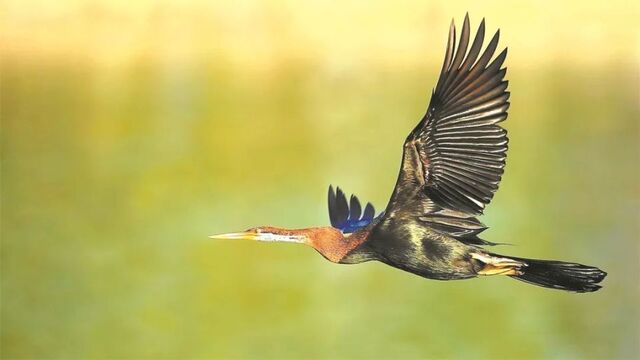
The Black-bellied Snake Darter (scientific name: Anhinga melanogaster, foreign name: Darter) is a bird of the family Anhinga in the order Pelecaniformes. Other name: Snake Bird It is large in size, about 850-900 mm long; its belly feathers are dark brown, hence the name; its neck is slender; its head is small and narrow. The color of the head and neck is brown, with a white line extending from the chin to the side of the neck; the feathers of other parts are black in color, and the white filamentous feathers on the shoulder blades have black feather edges; the iris is brown, the beak is yellow-brown, the upper jaw line is black, and the feet are gray.
The Black-bellied Snake Darter is distributed in India, Southeast Asia, the Philippines, Sulawesi Island and the Sunda Islands. It inhabits lakes and clean water sections of large rivers. It is a tropical inland water bird, good at diving, and uses its beak as a harpoon to spear fish. When swimming, except for the head and neck exposed above the water, almost the whole body is submerged in the water, swinging the body left and right like a snake. For most birds, once the wings touch the water, it means that their lives will be threatened, but for the black-bellied snake darter, the wings touching the water can increase their weight, thus helping them to dive better. In order to survive better in the water, they have even evolved strong webbed feet. Use a serrated beak to pierce fish and carry them ashore. During the breeding season, male birds will perform courtship performances, spreading their long tail feathers in a fan shape and tilting them forward. When courting, they will make a shrill scream.
Morphological characteristics
The black-bellied snake darter is a long-necked bird. They are like snakes but not snakes. They are veritable birds. Their size and shape are similar to those of the cormorant family. On average, the length of the black-bellied snake darter is between 850 and 900 mm. It has a long and straight beak, a long neck, a long tail (202 to 240 mm long) and webbed feet. The wingspan is 116 to 128 cm. The wingspan is generally 331-357 mm. Usually, adult males are slightly larger than females. The feathers are semi-permeable, which helps with swimming.
There are also bends in the 7th, 8th, and 9th vertebrae, which allow their necks to shoot suddenly to catch fish. In northeastern India, locals domesticate the birds for fishing. Darters are named for this behavior. Adult males and females are similar in color; however, juveniles have different colors. The crown and nape are brown, and the back of the head is black. Their bills are long and yellow with serrated edges. The underside of the neck is white; there is also a white line on the sides of the head. The back and long tail are black. The tail consists of 12 feathers. However, their wings have black feathers and white feathers. The legs are black; the feet have four toes and are webbed. Black-bellied snake darters molt and may lose so many feathers that they may not be able to fly for several days. During this period, they usually look "wrinkled".
The crown and nape of the juveniles are more light brown. The underside of the neck is white, but there is no white line on the side of the neck. The white wing feathers are more yellowish-white when young.
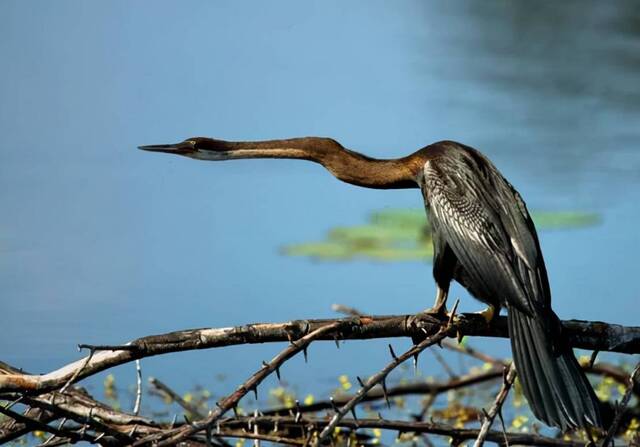
Habitat
Black-bellied snake darters usually live in trees or bamboo groves, near water environments and habitats with large communities. These water environments usually include deep estuaries, lakes, ponds, streams, rivers or swamps. The water in these environments only needs to be deep enough for diving and swimming.
Habitat and behavior
Black-bellied snake darters spend most of their time perched or swimming. Since their feathers are not completely waterproof, they absorb water and have less buoyancy, allowing them to swim and dive faster. They usually swim with their wings spread and paddle with their webbed feet. After swimming, they sit on branches to bask in the sun, spread their wings to groom and dry. They are rather clumsy when on the ground or close to the ground.
Black-bellied snake darters can sit on the water or swim actively. When swimming, only the head and neck are exposed, and the rest of the body is submerged. They may suddenly jump from the water or branches. In flight, black-bellied snake darters are very similar to cormorants. They are powerful fliers and can soar great distances without flapping their wings
Calls
Black-bellied Darters communicate with each other primarily through calls. Their distinctive call is a hoarse croak, like "kah-kah-kah," accompanied by hisses and clicks. The sound of the Black-bellied Darter is similar to that of a cormorant, but slightly lower. When breeding, mates will call to each other and communicate through wing-flapping displays. When approached or surprised by humans, they will often extend their necks and flap their wings, which may be a warning to others nearby.
Diet
Black-bellied Darters may catch prey in one of several ways. They may dive into the water from a perch or dive from the surface to slowly stalk or chase a fish. Still others wait for a fish to surface, or swim across the water. At this point, they will attempt to shoot out of their necks and spear the fish. This sudden movement is possible because their necks are bent at the 7th to 9th vertebrae. Once their prey is speared, the darters surface, toss the fish into the air, and swallow it headfirst. They may also swallow the fish whole underwater, rather than spearing it. Afterwards, they usually leave the water and dry their wings.
Dark Darters usually eat fish, but have been found to eat insects, aquatic reptiles (turtles, snakes) and amphibians (frogs, salamanders), shrimp, rodents, mollusks, sponges, and various plant grasses and seeds in small quantities. However, the presence of these plant materials in their stomachs may be accidental.
Distribution
Native to the Indian subcontinent; distributed in tropical and subtropical regions of Africa, Asia, and Oceania, west to Pakistan and north to the Indo-Nepal border; mainly distributed in India, Laos, Myanmar, Cambodia, Sri Lanka, Singapore, Thailand, Malaysia, and island countries such as the Philippines and Indonesia.
Reproduction
Dark Darters are monogamous and usually breed in groups when mating season arrives. Males attract and greet mates by flapping their wings, etc. Nests are built on branches near water bodies. The mates use branches to build nests, about 40 to 50 cm in diameter, and line them with leaves. The nests are usually located in trees overhanging the water and can be reused year after year. If threatened, both male and female mates will protect the nest and the young by jumping, hissing, and biting. The partners communicate with each other through singing and flapping wings.
It is understood that the black-bellied snake darter has a very strong reproductive capacity. After mating is successful, the female black-bellied snake darter will lay offspring after about 40 days, and can lay 5 to 8 eggs each time. And incubate in 25 to 30 days. The eggs are usually hatched asynchronously. These eggs are oval and covered with a green-white coating (which may turn brown due to incubation). Under this coating, the eggs are light green blue. The young birds leave the nest and live independently at around 50 days. Sexual maturity occurs at around 2 years old. After hatching, the young are cared for by both parents. In the first few weeks, the young birds have a shorter incubation time. After the chicks hatch, the male black-bellied snake darter will increase the amount of fishing, feeding the young up to 6 to 9 regurgitated food per day. The average lifespan in the wild is 9 years. In captivity, the longest known lifespan is 16.
The black-bellied snake darter was listed in the "Red List of Endangered Species of the World Conservation Union" in 2016, and is a protected animal of the near-threatened level. In 2023, they will also be included in my country's "List of Key Protected Terrestrial Wildlife in Yunnan Province".

